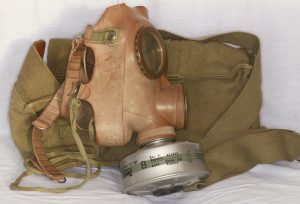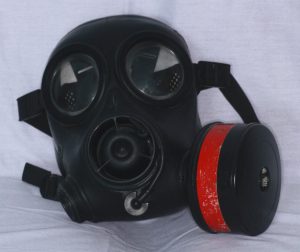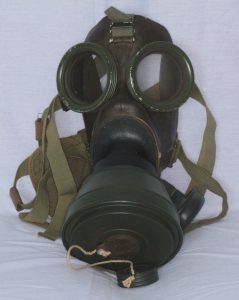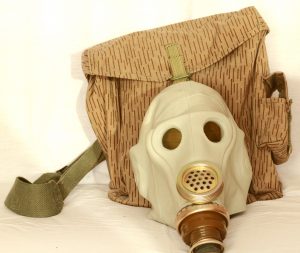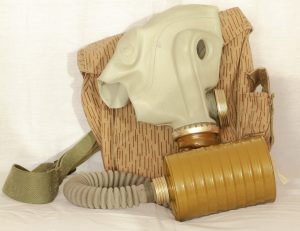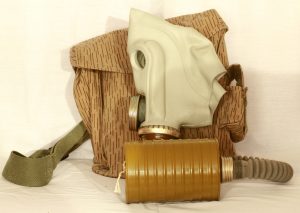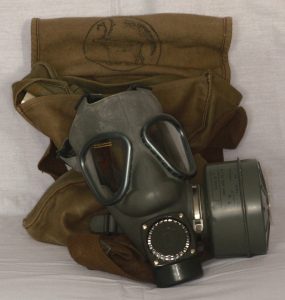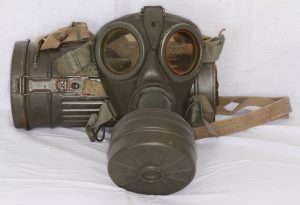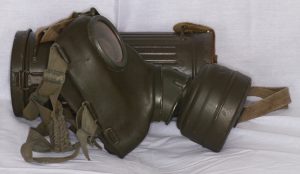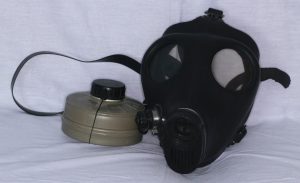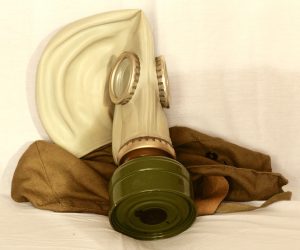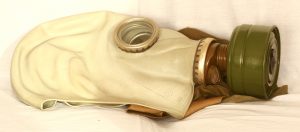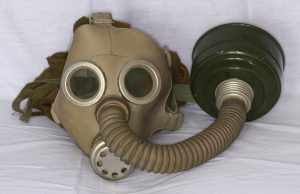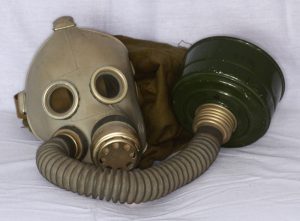My CBRN Collection
Chemical, Biological, Radiological, Nuclear
Why do I collect CBRN stuff?
The main reason that I collect gas masks, if you haven’t noticed already by viewing the other content on my website, is that I like to collect weird and wacky stuff.
Second, gas masks are just very simple by design and yet so effective in their purpose. The most famous examples being from the first world war where, although controversial in its use, many countries used chemical agents in mass to weaken or outright murder enemies prior to an attack or defence.
In more modern times gas masks see quite some use in either terrorist attacks, the metro bombings in Tokio being an example, or the chemical attacks on civilians and/or servicemen in the middle east in the last decades.
Outside of gas masks, I love to collect geiger counters since such devices make things measurable that are virtually impossible to sense (until too late).
My gas masks
Under here is my full gas mask collection. Each mask contains one or more images of my collection and information about the mask.
Masks are ordered alphabetically by country.
Belgian L.702
The Belgian L.702 was manufactured from the late 30’s to the early 40’s by the ‘Société Belge de l’Azote et des Produits Chimiques du Marly’ (known as SBA) in Liege, Belgium.
The L.702 uses a metal filter that screws onto a bakelite connector with a simple ruber disk to act as an inhale- and exhale valve at the sime time.
Depending on the country that used it the mask intake screw could have various diameters ranging in 25mm, 40 or 42mm.
These masks saw little to no use and were, after the war, reused for the civil defence.
Belgian/French M51
The ANP M51 (French for: Appareil Normal de Protection modèle 51) is an Belgian/French gas mask used in the 50’s all the way to the 90’s.
This masks saw combat use in the Persian Gulf War.
British FM12
The FM12 was developed by Avon Protection in the early 90’s as replacement for the S10, however it never came to be of that and Avon had to turn it into a commercial mask for other militaries like the Dutch, Belgian and Norwegian.
Because the maks is made of butyl rubber it doesn’t require any type of face form and it provides natural resistance to corrosive agents.
The FM12 can be outfited with an microphone.
Dutch K52
The K52 is one of the Dutch models from the model K series of masks. The K52 was produced by ‘Vredestein’ and ‘Hevea’ from 1952 to 1953.
A noticeable feature of the K52 is that the mask has both a 40mm and 60mm thread on the front piece. The exhale valve was a separate ‘mushroom’ shaped piece, this was done to make it easily replaceable.
The glass on the mask could be easily screwed off to replace it with a new piece in case of damage.
A major drawback is that the mask doesn’t seperate the nose and mouth from the lenses. Making the inside of the mask fog up quickly.
East German/Soviet SchMS
The Soviet produced and in East German service gas mask called the SchMS (German: Schutzmaske Spezial) was used during the cold war, primarily for scouts, snipers and artillery servicemen.
The SchMS has a voice emiter in the front to amplify the voice of the wearer. The mask, where worn, has a flat front around the eyes which allows to look through various optics.
The mask is currently still in use by the Syrian armed forces.
Finnish M/61 (Model 3)
The Finnish M/61 was manufactured by Nokia from the 60’s up to 1971.
The M/61 was a standard issue gas mask for the Finnish armed forces. The filter on this mask is attached to the side on a 60mm thread.
The M/61 saw little action by the Finnish army. But there is a footage of models being used in the ‘NO-TAV’ protest in Italy. (2015)
German GM-38
The German GM-38 was used by the German armed forces during World War 2. It was produced by Dräger and Auer from 1938 to 1945.
This mask saw use outside of protection against chemical agents. It was used for the RPzB 54 Ofenrohr (stovepipe) better known as the ‘Panzer Schrek’ to protect the wielder’s face when firing since the rocket still burned after leaving the tube.
It was also used in the eastern front to somewhat protect the user’s face from the cold temperatures.
Soviet GP-5
The soviet GP-5 is a mask kit produced from 1962 to 1990 by the Soviet Union.
The mask was designed to protect civilians from radioactive fallout during the cold war.
This mask is one of the most controversial ones. The filter is well known for stories to contain asbestos. There are reports from both Finland and the Netherlands that have proven that those filters contain asbestos with filters from at least up to 1988.
This mask is often seen in games.
Soviet PDF-D and PDF-Sh
The PDF series of gas masks are made by the soviet union from the 1950’s specifically for children.
All models of the PDF series contain an pre-attached hose since connecting the filter directly to the mask would be too heavy for a lot of children. The filter would then be put in a cloth bag that the child wears over its shoulder.
Dangers of collecting gas masks
Collecting gas masks can come with some dangers. One of the most well known dangers lies in the gas mask filters themselves.
Many of the old filters, particularly from 70’s-80’s and before contain (chrysolite or crocidolite) asbestos. Using any of those filters can thus come with a health risk.
Filters from after the 50’s-60’s can contain chromium six (hexavalent chromium).
Lastly, even if the filters do not contain any of the dangerous compounds stated above it can still be dangerous as activated charcoal and or chemical agents (if the filter has been used before) can be breathed in if the filter became damaged, be it internally and/or externally, or is already in an opened state.
Best practice is just to not use any old and/or used filters.
My gas suits
I also own a few gas suits from different countries. I can fit them all. One of them was a surplus for the gulf war. Others are not completely clear.
Will make photos later.
My geiger counters and related
I currently own two geiger counters. One Dutch IM-3004 from the 50’s, still working.
One polish DP-66M, needle is broken, but the ticker works so it still detects. Wanted to fix it, but that requires time and a lot of effort.
And a, still unknown, German device made by FAG that is ment to simulate radiation for training.
Will make photos later.
External sources
The information I used is from: http://gasmaskandrespirator.fandom.com/
I also recommend looking here for other great masks from another collector: http://mygasmaskcollection.blogspot.com/2008/06/gas-mask-collection.html



